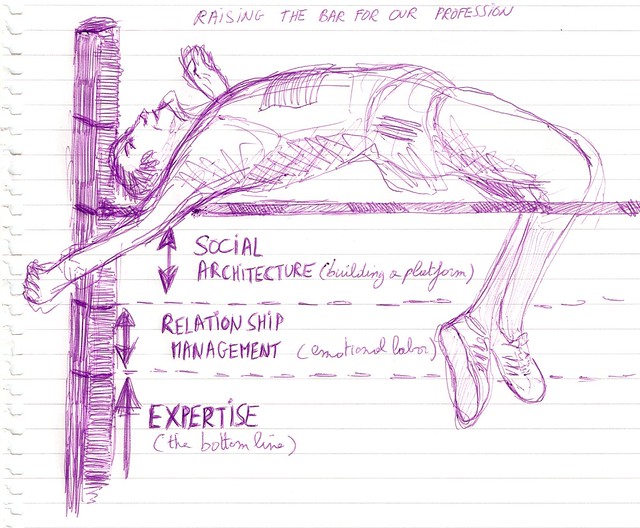The good old art of managing the emotional bank account of trust. With all the buzz around communities we are tempted to forget that the tipping point between our expertise and the community that supports it, is that bank account.
This is something I come across on every project, it’s the tipping point between delivery and sustainability of a change. In the three-step model that I use to frame Social Architecture the second level is called Relationship Management. This is where we put in the emotional labor on top of our expertise.
We do this for two reasons:
- make sure that our expertise gets used. In this sense, relationship management resides in our own emotional intelligence when we deliver our projects. This is necessary, but not sufficient to get to the next level.
- gain enough trust of people in order for them to allow us to take them that extra mile along community development. (OK, you may have to read that sentence twice… in the mean time I will think about a simpler way to put it).
Stephen Covey used the metaphor of a financial bank account into which you can make deposits and take withdrawals. The currency of this bank account is social currency, so its statements tell us something about the relationship you have with your friends, family, associates, customers, etc. The most important of all deposits into the emotional bank account is empathy.
Covey defines empathy as: listening to another person within his or her frame of reference. If you pay attention and show your interest you are building the relationship and making deposits on that account.
Getting from the level Expertise to Social Architecture is a big deal, certainly for people who are going through a change themselves (about 100% of our target population). On top of that, most people are not used to think in terms of developing a community around the project. That’s where the bank account comes in.
Did you make enough deposits? Then people will be opening up to you, show you their vulnerability in the face of their organization, and let you help them develop community.
If not, well then… better get back to good old project propaganda…




Pingback: Getting Serious about Community Development (Part 4) | Reply-MC | Business change | Scoop.it()
Pingback: When is it Time to Go? (Part 1) | Reply-MC()